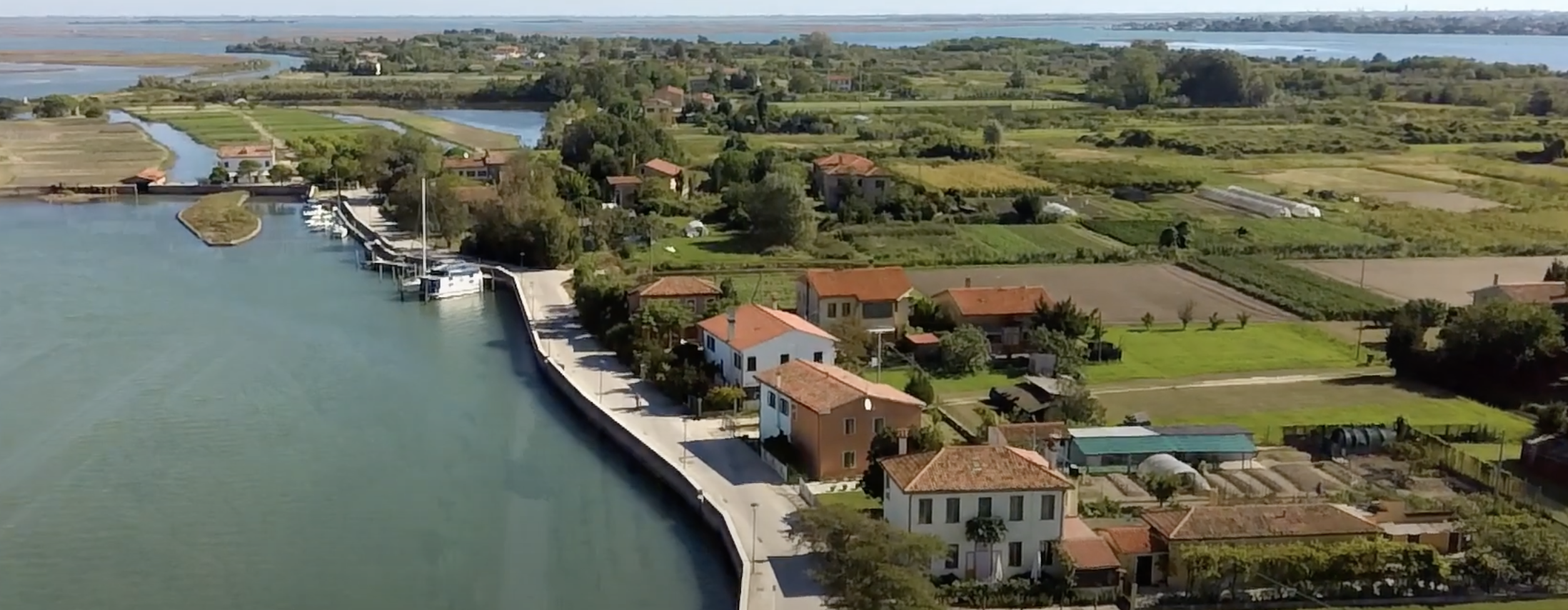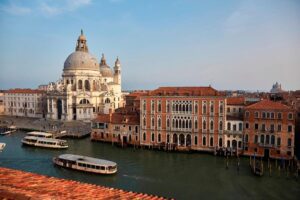Sant’Erasmo: The Secret Garden of Venice — A Day Trip into the Green Heart of the Lagoon
When most travelers imagine Venice, they picture gondolas gliding under bridges, marble palaces reflected in canals, and the glow of St. Mark’s Square at sunset. But just beyond the lagoon’s shimmer lies a different kind of magic — a quiet island that has nourished Venice for centuries. Welcome to Sant’Erasmo, affectionately called “the Garden of Venice.”
This peaceful stretch of green is where the city’s famous artichokes, asparagus, and wine grapes are grown. It’s a place of wide horizons, open fields, and soft winds carrying the scent of salt and soil. There are no crowds or souvenir stalls here — just the rhythm of farm life, the hum of cicadas, and the call of seabirds drifting across the lagoon.
For travelers who want to experience the real Venice beyond the postcard views, Sant’Erasmo is a revelation — the living, breathing pantry of the Serenissima, where traditions of the land still flourish between canals and sky.
🌿 A Living History: How Venice’s Garden Came to Be
From Marshland to Miracle
Long before Venice became a maritime empire, the islands of its lagoon were little more than mudflats. Sant’Erasmo began as one such patch of marsh, slowly reclaimed by settlers who understood the delicate balance of water and earth. By the Middle Ages, farmers had transformed it into fertile ground, enriched by silt and minerals brought in by the tides. Its location — between the Lido and Burano — made it both protected and productive, ideal for growing the vegetables that would feed a growing city.
During the height of the Venetian Republic, the island played a vital role in everyday life. While Venice’s merchants traded silk and spices from faraway lands, the real sustenance came from closer to home. Sant’Erasmo’s boats — heavy with fresh artichokes, chicories, and grapes — sailed daily to the Mercato di Rialto, the city’s beating commercial heart. There, these local treasures were sold to noble families, tavern keepers, and the ordinary citizens who filled the calli with life.
Venice’s Strategic Outpost
In the 18th and 19th centuries, the island took on another role — as part of Venice’s defensive network. Its most striking remnant from that era is the Torre Massimiliana, a circular fort built by the Austrians around 1840. With its thick brick walls and panoramic view of the lagoon, it was once a watchtower and artillery post. Today, it has been restored into a cultural center that hosts exhibitions and summer concerts — a beautiful symbol of how Sant’Erasmo, once a fortress of defense, now guards Venice’s heritage in a gentler way.
🍆 The Garden of Venice: Life from the Soil
Unlike Venice’s marble grandeur, Sant’Erasmo’s beauty is humble — made of soil, wind, and sunlight. Its farmers cultivate the same plots their grandparents did, using knowledge passed down through generations. The lagoon’s mineral-rich waters act as a natural fertilizer, giving everything grown here an intensity of flavor you won’t find elsewhere in Italy.
The Violet Artichoke — The Island’s Purple Jewel
The most iconic symbol of Sant’Erasmo is its beloved Carciofo Violetto, a small, tender purple artichoke protected by Slow Food and adored by Venetian chefs. Each spring, locals eagerly await the first castraure — the tiny, early buds harvested by hand. They’re so delicate they’re often eaten raw, thinly sliced with lemon juice and olive oil. Later harvests, known as botoli and massimi, are larger and ideal for grilling, stuffing, or folding into creamy risottos.
Every May, the island celebrates its pride with the Festa del Carciofo Violetto, a cheerful event where visitors can taste artichokes prepared in every imaginable way: marinated, fried, baked, or served simply with salt and oil — the Venetian way.
Beyond Artichokes: A Year of Harvests
The artichoke may be the star, but Sant’Erasmo’s fields yield a full calendar of produce:
- Spring: White asparagus, peas, and fava beans.
- Summer: Tomatoes, zucchini, and basil.
- Autumn: Grapes and chicories, including the famous Radicchio di Treviso.
- Winter: Hardy greens and root vegetables that thrive in the cool lagoon air.
Each season has its rhythm, marked not by crowds but by the slow turn of the tides and the color of the soil. For Venetians, these cycles are sacred — reminders that even a city built on water depends, ultimately, on the land.
Wine Born of the Lagoon
Vineyards may seem improbable on an island surrounded by saltwater, yet Sant’Erasmo’s unique terroir produces one of the most distinctive wines in the region. The Orto di Venezia vineyard, established in the early 2000s, has earned international praise for its crisp white wine made primarily from Malvasia Istriana grapes. The flavor is vibrant, saline, and deeply connected to its environment — like a sea breeze captured in a bottle.
Visitors can stroll through the vines, enjoy tastings, and look across the lagoon to see the skyline of Venice shimmering in the distance — an unforgettable sight that perfectly encapsulates the harmony between land and water.
🚴 Slow Life in the Lagoon
Time moves differently on Sant’Erasmo. There are no vaporetti crammed with commuters, no rush-hour footsteps echoing off stone. Instead, you’ll find farmers tending their crops by hand, locals gliding along narrow roads on bicycles, and quiet canals bordered by reeds where herons and egrets hunt at dusk.
The island’s charm lies in this stillness. Here, you can breathe deeply, feel the lagoon’s rhythm, and witness a side of Venetian life that has all but disappeared elsewhere. It’s a rare pocket of authenticity — a reminder of what Venice once was before tourism transformed it into a global stage.
🏛️ What to See and Do on Sant’Erasmo
1. Torre Massimiliana
This 19th-century fortress dominates the island’s northern edge. Its thick circular walls and central courtyard now host art exhibits, open-air concerts, and local festivals. Climb to the rooftop terrace for one of the most stunning views in the entire lagoon — Venice’s skyline on one side, and the Adriatic glimmering on the other.
2. Bike the Island
Sant’Erasmo is flat and perfect for cycling. Bring a bike on the vaporetto or arrange one through your Slow Lagoon private tour. The roads are quiet and shaded by poplars, passing fields of artichokes and canals lined with wildflowers. Every turn offers another postcard view — the city in the distance, its campanili rising like mirages.
3. Beaches and Swimming
Few know that Sant’Erasmo also has small, sandy beaches — less polished than the Lido’s but infinitely more peaceful. Locals swim here in summer, where the water is calm and clear, and the only sound is the whisper of reeds and the occasional splash of a fish.
4. Visit the Farms and Vineyards
Several family-run farms welcome visitors for tastings and tours. Sample fresh artichokes drizzled with olive oil, seasonal vegetables pulled straight from the soil, and the island’s crisp white wine. These experiences reveal the agricultural soul of Venice — genuine, humble, and rooted in respect for nature.
5. Seasonal Festivals and Cultural Events
Besides the artichoke festival, Sant’Erasmo hosts smaller celebrations throughout the year — harvest feasts, asparagus markets, and slow-food pop-ups where locals and chefs collaborate to showcase the island’s produce. During summer, Torre Massimiliana becomes the stage for jazz nights and open-air cinema under the stars.
🚤 Getting There — And Getting the Most Out of It
By Vaporetto
The island is accessible from Venice by Line 13 from Fondamenta Nuove. The scenic ride passes Murano and Vignole before reaching Sant’Erasmo in about 35 minutes. It’s an easy and affordable way to glimpse daily lagoon life, especially in the early morning when farmers are loading crates of produce onto their boats.
By Private Boat
For a more exclusive and comfortable experience, Tour Leader Venice offers private boat transfers directly from your hotel or pier. You’ll glide across the lagoon in style, enjoying panoramic views and the freedom to stop where you wish — perhaps combining Sant’Erasmo with nearby Murano or Burano for a full day of island exploration.
This flexibility allows you to experience the lagoon your way — slow, spontaneous, and stress-free.
🥂 A Tour Leader Venice Private Day Trip to Sant’Erasmo
With Tour Leader Venice, your day on the island becomes a seamless, curated experience — part cultural exploration, part sensory delight.
- 🚤 Private Boat Transfer — Direct from Venice, with scenic lagoon views and your own expert captain.
- 👩💼 Licensed Local Guide — Sharing stories of history, agriculture, and island traditions known only to Venetians.
- 🥂 Tasting Experience — Sample fresh produce, local wine, and seasonal specialties straight from the source.
- 🚴 Optional Bike Ride — Explore hidden paths and canals at your own pace.
- 📸 Photo Stops — Capture views of Venice’s skyline from across the water.
- 🕰️ Customizable Itinerary — Combine Sant’Erasmo with Murano, Torcello, or Burano for a full lagoon adventure.
Sample Itinerary — Venice → Sant’Erasmo → Venice
| 9:30 AM | Private boat pick-up in Venice. |
| 10:15 AM | Arrival on Sant’Erasmo; guided walk among fields and canals. |
| 11:00 AM | Visit Torre Massimiliana and enjoy panoramic lagoon views. |
| 12:00 PM | Farm or vineyard visit with tasting (artichokes, wine, and seasonal vegetables). |
| 1:30 PM | Picnic lunch with local products or trattoria meal. |
| 3:00 PM | Bike ride around the island; photography stops. |
| 4:30 PM | Optional swim or aperitivo by the water. |
| 5:30 PM | Private return to Venice, arriving by early evening. |
🌅 Why Sant’Erasmo Matters — And Why It Feels Magical
In a world where most destinations chase visibility, Sant’Erasmo remains defiantly modest. Its charm lies in what it doesn’t have: no luxury hotels, no souvenir stands, no Instagram crowds. Instead, it offers something far more valuable — a chance to see where Venice’s beauty truly begins.
Here, you witness the invisible threads connecting the lagoon’s ecosystem: farmers tending crops that appear later in the city’s markets, winemakers who shape their vines by the tide, fishermen who still navigate narrow canals at dawn. The balance of land and water — so vital to Venice’s past — still survives on this small, sun-washed island.
To walk or cycle here is to experience Venice before Venice — the landscape that made the impossible city possible.
💡 Practical Tips for Visiting Sant’Erasmo
- Best Season: April to October. Spring brings artichokes and asparagus; summer is ideal for swimming and cycling.
- Footwear: Comfortable shoes — the terrain is rural and occasionally muddy after rain.
- Bring Cash: Some farm stands and cafés don’t accept cards.
- Respect the Land: This is an agricultural community — stay on paths and avoid disturbing crops.
- Combine Wisely: Pair your visit with a private lagoon tour for the full experience.
🌺 Final Thoughts — Venice’s Soul Grows Here
Sant’Erasmo is Venice stripped of spectacle and restored to simplicity. It’s the city’s pantry, its lung, its memory — a place where time still bends to the rhythm of the tides and where every meal in Venice begins its life as a seed in this salty soil.
While millions gather in St. Mark’s Square, only a few discover this hidden paradise — where artichokes bloom purple in the sun, fishermen mend nets on wooden docks, and the city’s skyline glimmers on the horizon like a mirage. To visit Sant’Erasmo is to understand Venice from the inside out — to see not just the marble, but the earth beneath it.
If you want to breathe, taste, and experience the authentic Venice — slow, green, and grounded in tradition — this is where your journey begins.
❓ FAQs — Sant’Erasmo, the Garden of Venice
Can you visit Sant’Erasmo from Venice?
Yes — Sant’Erasmo is easily accessible by vaporetto Line 13 from Fondamenta Nove, or more comfortably on a private lagoon tour. With Tour Leader Venice, you can reach the island directly by private boat, combining it with nearby Murano, Burano, or Torcello for a full lagoon experience. Many guests book our Venice Tour of the Lagoon — Discover the Hidden Gems to explore this authentic, untouristed side of Venice.
What is Sant’Erasmo famous for?
Known as the Garden of Venice, Sant’Erasmo supplies the city with its finest produce — especially the Carciofo Violetto, a small purple artichoke celebrated every spring during the Artichoke Festival. The island also produces exceptional wines, like the Orto di Venezia white, and offers peaceful landscapes ideal for cycling and photography. For a more immersive experience, combine the island’s rustic charm with our Venice Sunset Tour on a Traditional Bragozzo Boat and watch the lagoon glow in golden light.
Can I include Sant’Erasmo in a private eco-cultural itinerary?
Absolutely. Tour Leader Venice specializes in Slow Lagoon experiences that connect Sant’Erasmo with other authentic islands and artisan workshops. You can pair your visit with a Create Your Own Masterpiece — Venetian Mask Workshop or travel in style aboard a Riva Experience — the most elegant way to see how nature, craftsmanship, and history intertwine across the Venetian lagoon.







